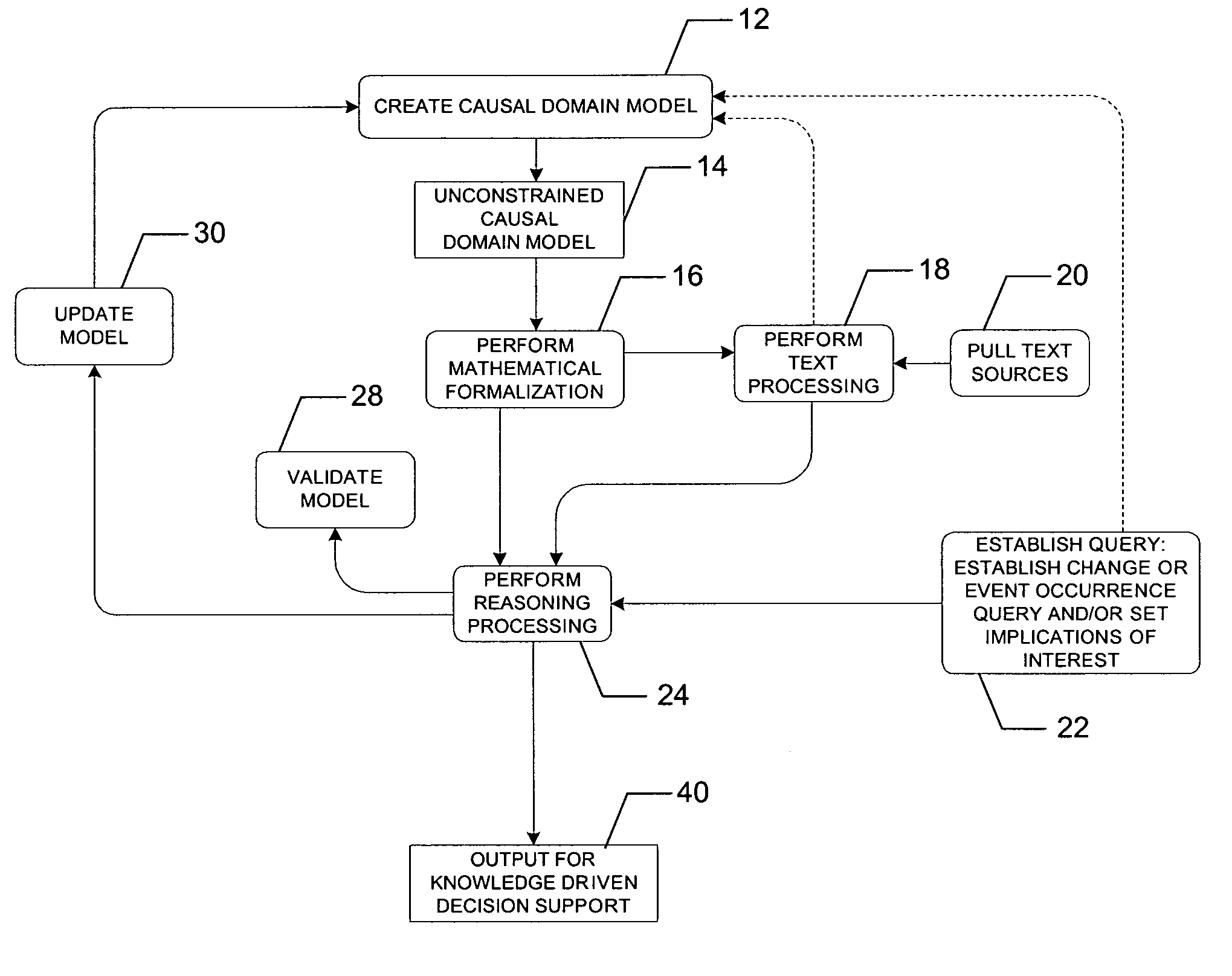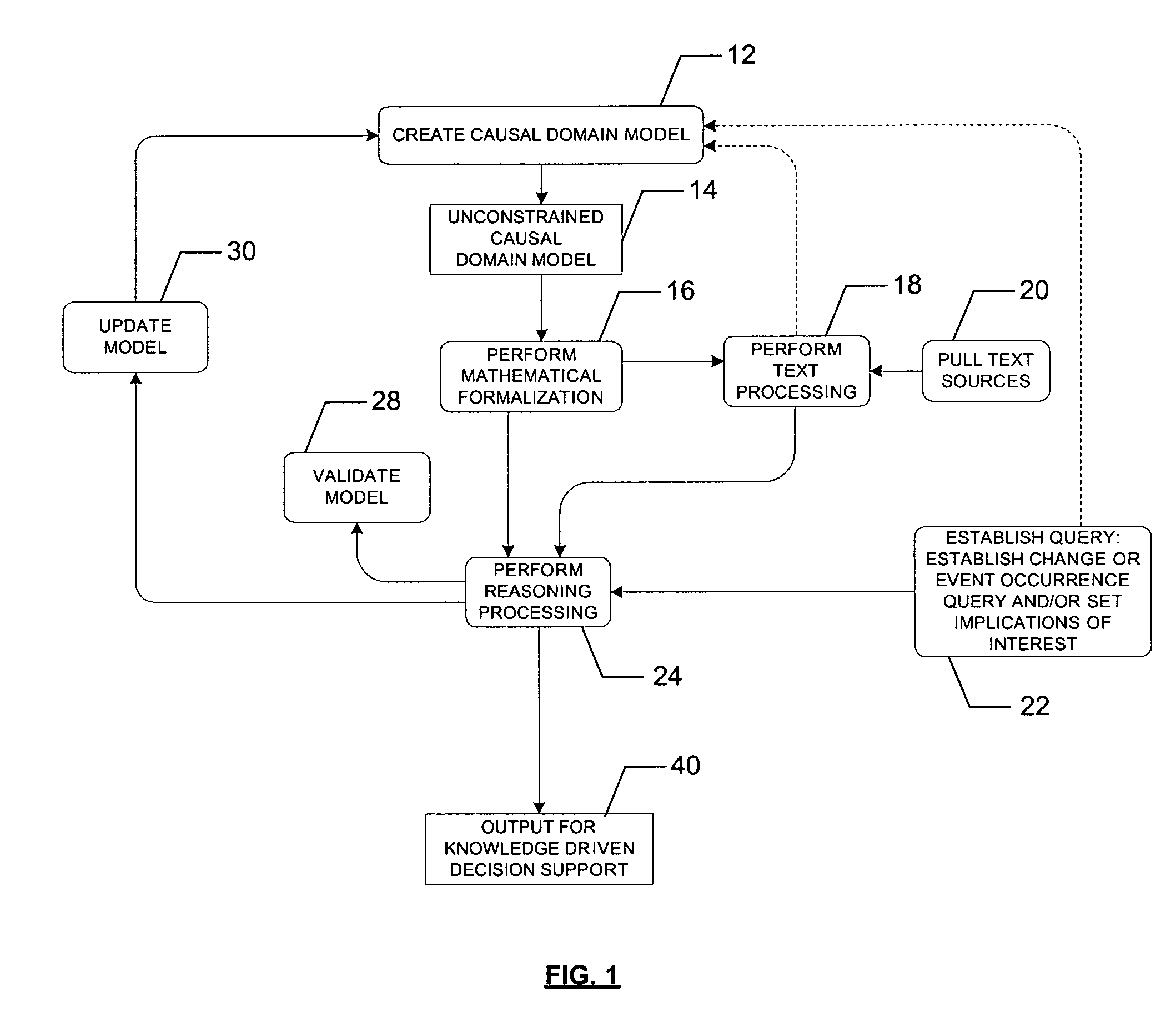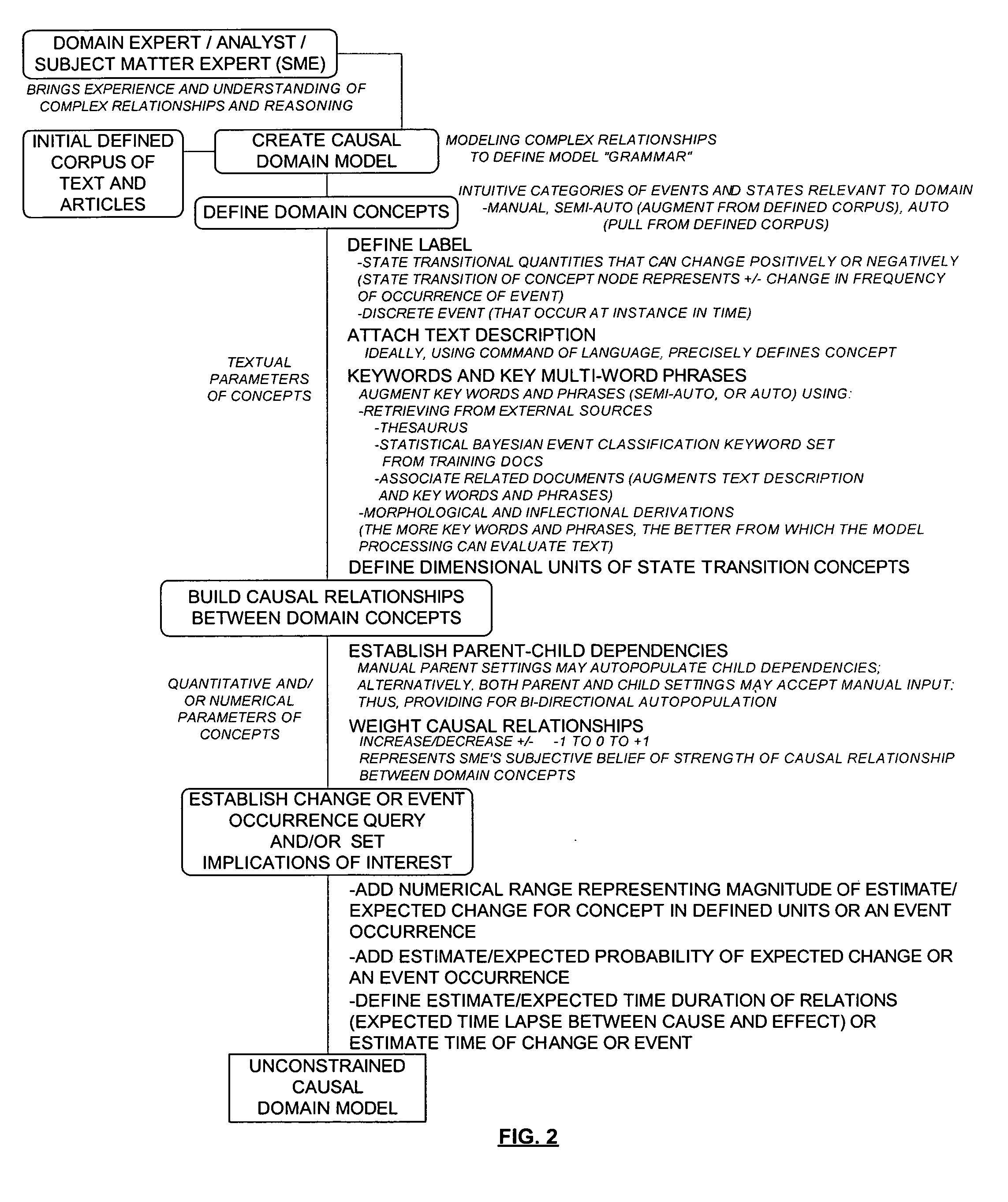System, method, and computer program product for combination of cognitive causal models with reasoning and text processing for knowledge driven decision support
a causal model and knowledge technology, applied in the field of decision support systems and methods, can solve the problems of unable to fully understand and process information, decision makers and analysts can be prevented from fully understanding and processing information, and particular issues are becoming complex, so as to increase or decrease the weight of causal relationships
- Summary
- Abstract
- Description
- Claims
- Application Information
AI Technical Summary
Benefits of technology
Problems solved by technology
Method used
Image
Examples
Embodiment Construction
[0032] The present inventions will be described more fully with reference to the accompanying drawings. Some, but not all, embodiments of the invention are shown. The inventions may be embodied in many different forms and should not be construed as limited to the described embodiments. Like numbers refer to like elements throughout.
[0033] The present invention can be described in terms of concepts of human language learning. For example, a subject matter expert (SME) or domain expert or analyst, hereinafter generally described as a domain expert, has existing knowledge and understanding of a particular domain. The domain expert will recognize and understand specific domain concepts and associated keywords and key multi-word phrases. These domain concepts and key words and phrases can be described as the vocabulary of the domain. Similarly, the domain expert will recognize and understand causal relationships between concepts of the domain. These relationships can be described as the...
PUM
 Login to View More
Login to View More Abstract
Description
Claims
Application Information
 Login to View More
Login to View More - R&D
- Intellectual Property
- Life Sciences
- Materials
- Tech Scout
- Unparalleled Data Quality
- Higher Quality Content
- 60% Fewer Hallucinations
Browse by: Latest US Patents, China's latest patents, Technical Efficacy Thesaurus, Application Domain, Technology Topic, Popular Technical Reports.
© 2025 PatSnap. All rights reserved.Legal|Privacy policy|Modern Slavery Act Transparency Statement|Sitemap|About US| Contact US: help@patsnap.com



